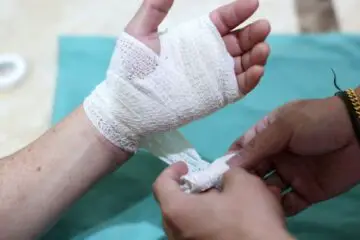HBOT was first used in the 1940s to treat deep-sea divers suffering from decompression sickness. It is now a standard therapy for chronic wounds; most insurance companies cover it.
Repetitive practice is a critical factor in triggering neuroplasticity after stroke, but the therapy can be slow and laborious. HBOT offers a simple and effective solution to speeding up this process.
HBOT and Stroke Rehabilitation
Increased Blood Oxygen Levels
HBOT increases blood oxygen levels, which allows damaged cells to heal and helps the body fight infections. This is important for stroke patients because a stroke can cut off the flow of oxygen to the brain. HBOT can help restore normal function and improve strength, endurance, balance, motor skills, verbal skills, and memory.
HBOT therapy is a simple, low-risk treatment. Its effectiveness and convenience make it a popular choice for many survivors of stroke who cannot participate in more intense rehabilitation techniques. The majority of insurance policies cover it, and it can be completed at home.
Studies have shown that HBOT can restore a functional brain even at chronically late stages of the disease, reinvigorating dormant neurons and helping them to develop new connections with neighboring cells (Efrati et al., PLoS ONE).
Increased Brain Activity
The oxygen levels in your blood and brain tissues above atmospheric pressure are raised, allowing your body to absorb more oxygen by HBOT and Stroke patients with brain injuries; the inactive neurons that have been damaged and deprived of oxygen will be activated by this process.
Studies have shown that patients with brain injuries experience dramatic cognitive improvements after receiving HBOT treatments. These results suggest that the Sagol Center’s HBOT protocol reactivates inactive neurons and provides the energy needed to regenerate new brain tissue.
The research published in Restorative Neurology and Neuroscience found that HBOT treatment can help improve most domains of cognitive function, even months or years after a stroke. Additionally, this study discovered a correlation between the improvement in other clinical outcomes and the improvement in cognitive areas.
Among the factors associated with HBOT-induced improvement were age, gender, education level, handedness, stroke details (type, injured hemisphere, location), chronic medical conditions (diabetes mellitus type II, hypertension, dyslipidemia, ischemic heart disease, smoking status, medication use including AA, statins, IHD, and DM II), and baseline and post-HBOT cognitive evaluations.
Increased Inflammation Reduction
HBOT helps reduce inflammation caused by stroke and TBI. It works by flooding the bloodstream with oxygen. The oxygen levels in the chamber are 17 times higher than atmospheric pressure, which allows oxygen to reach tissues that cannot get enough from the circulatory system alone.
The oxygen also encourages the body’s innate oxygen radical scavengers to work in damaged tissues. The result is reduced inflammation and less damage to the blood vessels, which means more oxygen is available for damaged cells.
Cognitive decline can result from oxygen shortage and inflammation killing brain cells. By repairing these damages and promoting the formation of new connections between brain cells, HBOT improves neuroplasticity.
Patients with ischemic stroke who are not candidates for mechanical or chemical thrombectomy benefit from a series of HBOT sessions in the acute phase of the disease. These sessions can reverse some resulting disabilities, such as severe tetraplegia or paraplegia. Patients can continue to benefit from the treatment even years after their stroke, enhancing recovery and improving quality of life.
Increased Cognitive Function
HBOT increases oxygen levels in body tissue up to 10 to 15 times on average. Growth factors and stem cells that aid in healing are released as a result of this. Studies have shown this process increases cognitive function, including attention and processing speeds. This is significant because scientists once believed that the brain’s ability to make new connections was permanently impaired after a stroke.
Clients sit in a pressurized suit and breathe 100% oxygen during a session. This increase in oxygen and its fluctuation stimulates the body to heal itself. HBOT has been shown to improve a variety of symptoms associated with ischemic stroke, including weakness and spasticity.
HBOT is a simple, safe treatment. It can be used with physical therapy, dietary and exercise counseling, and mental health rehabilitation. The results of this combination can significantly impact stroke recovery and help patients achieve their functional goals. This can include regaining balance, strength, endurance, and improving speech, memory, and motor skills.








